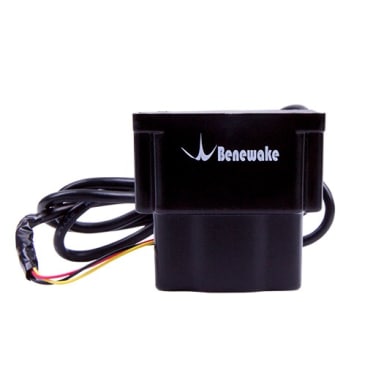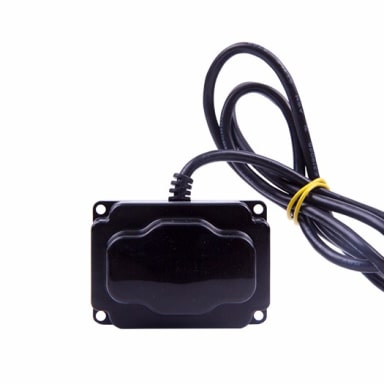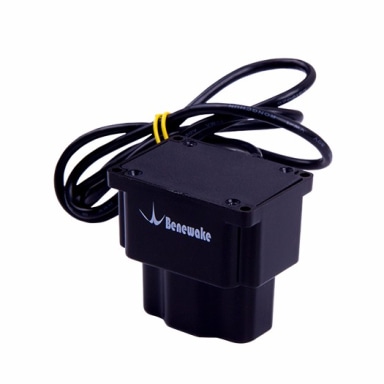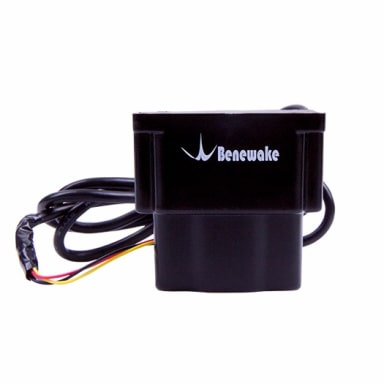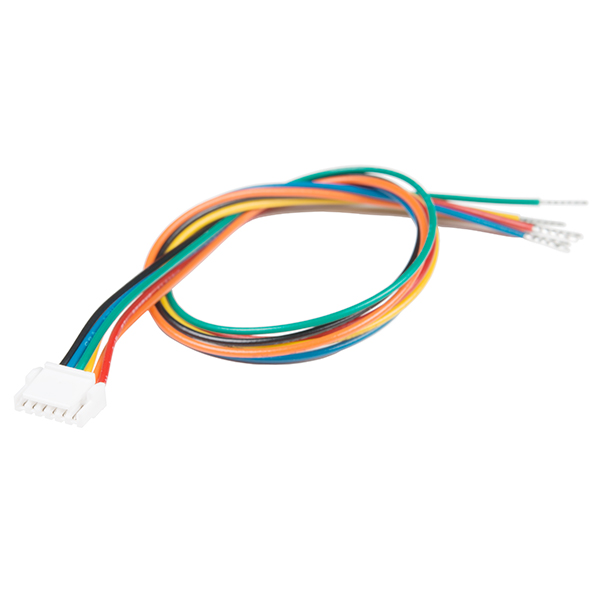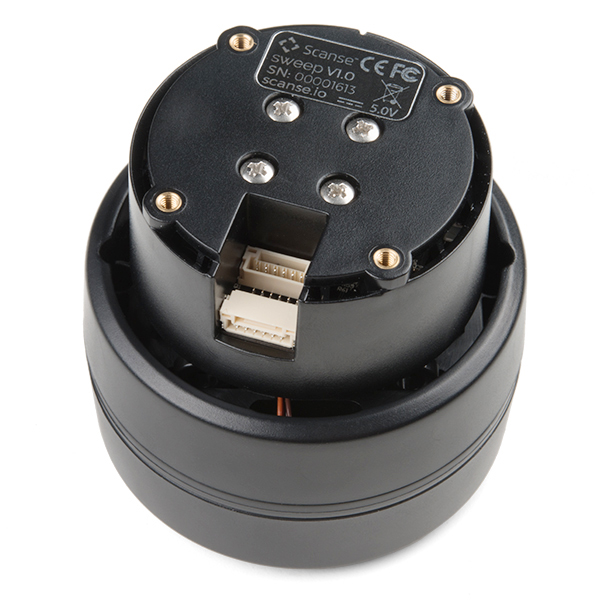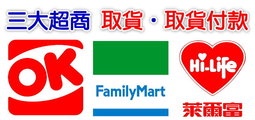DE-LIDAR TF01
資料來源:https://www.seeedstudio.com/DE-LIDAR-TF01-p-2789.html
Description
This product is discontinued, please consider the DE-LIDAR TF02 as analternative.

DE-LIDAR TF01 is based on ToF (Time of Flight) principle, with unique characteristic of optics, electronics, and design. It can also achieve stable, accurate, high-sensitivity and high-speed distance measurement.
| Key Features | Sensitivity | High |
| Detection range | 10m max(@90% Reflection ) | |
| Detection frequency | 500Hz | |
| Anti – ambient light | Function under 100k Lux ambient light | |
| Shape | Exquisite size,light weight(< 50 g) | |
| Accuracy | Centimeter-level(1% Relative error) | |
| Applications |
UAV(drones) floating at fix height Terrain Followin |
|
| Machine control, security sensor | ||
| Distance measurement | ||

Picture below is reference design,the size is 51mm*36mm*48mm.

1: Shell 2:Assembly hole 3:Wire
DELiDAR TF01 Mechanical Dimensions(reference design)

DELiDAR TF01 contour dimension(unit:mm)

Time of Flight (ToF) is a distance measurement method. The modulated near-infrared light emitted from sensor is reflected by the object. By calculating the time difference or phase difference between emission and reflection, the distance from the object can be deduced and so does the depth information.


| Parameter | Symbol | Typ. | Unit |
| Supply voltage | DC | 7.4-12(±5%) | V |
| Power Consumption | P | ≤1 | W |
| LED peak current | Imax | 200 | mA |
| TTL | VTTL | 0~3.3 | V |

| Parameter | Symbol | Conditions/Comments | Typ. | Unit |
| Operating range | L | 100Klux ambient light @90% Reflection | 30-1000 | cm |
| Emitting half-angle | α | Customizable | 1 | Degree |
Receiving half-angl |
β | Customizable | 1 | Degree |
| Detection | De | Minimum detectable object size @ 5m | 4 - 6 | cm |
| Resolution | Re | Sensitivity to distance change | 0.5 | cm |
| Operating temperature | T | -10~60 | ︒C | |
| Peak Wavelength | λ | 850 | nm |
Test conditions: stable working for 8 hours.

Table below is protocol for DELiDAR TF01
| Protocol | UART |
| Baud rate | 115200 |
| Data bit | 8 |
| Checksum bit | 1 |
Data is output in hexadecrimal format, 9 bytes per frame,including one distant info,called “Dist”;Every “Dist” has a seriel number info to it,called Sequence;Frame end bit is checksum bit.
| Byte1 - 2 | Byte3 | Byte4 | Byte5 | Byte6 | Byte7 | Byte8 | Byte9 |
| 0x59 59 | Dist_L | Dist_H | Strength_L | Strength_H | Sequence_L | Sequence_H | CheckSum_L |
| Data coding information | |||||||
| Byte1 | 0x59,frame head,same in every frame | ||||||
| Byte2 | 0x59,frame head,same in every frame | ||||||
| Byte3 |
Dist_L distance value lower eight bit Distance is shown by HEX,eg.1000cm=03 E8 (HEX) |
||||||
| Byte4 | Dist_H distance value upper eight bit | ||||||
| Byte5 |
Strength_L Lower eight bit Strength stands for signal quality, scale 0-2000,indoor<3 reject, outdoor<10 reject |
||||||
| Byte6 | Strength_H Uppereight bit | ||||||
| Byte7 |
Sequence _L Serial number lower eight bit Sequence scale vary from 00 00 to FF FF,stands for 0 to 65535,to mark the continuity of the data |
||||||
| Byte8 | Sequence _H Serial number upper eight bit | ||||||
| Byte9 | Checksum check lower eight bit,Checksum = Byte1 + Byte2 + ... + Byte8,Checksum is the sum of the former eight bit,we only send the lower eight bit. | ||||||

| Strength | Correction Dist standard deviation/cm |
| >110 | < 0.7 |
| 80 – 100 | 0.7 – 1.1 |
| 50 – 80 | 1.1 – 2 |
| 20 – 50 | 2 – 5 |
| < 20 | >5 |

correction dist standard deviation-strength curve

 |
 |
Technical requirement:
Connect model Molex 43025-0400
Cable should be 4 core shielded RVV wire, inner core diameter 0.2


Windows TF-Module Data Display Program UI
① “Start” button, press the button to record TF-01 HEX data, the data will be saved in the same directory with the GUI;
② “Display Range”, click 5m or 20m to switch display scale between 5m and 20m;
③ “Data Amount for Distance”, Data amount to get an average distance(DAGAD)
④ Device command input area, input HEX command in this window and press Enter to send, to change functions or setting;
⑤ Scale to display the real-time measurement;
⑥ Area to display average distance-number of measurements;
⑦ the amount of the data rejected.
⑧ Data Detail area:Dist stands for distance,unit cm;Effective Point stands for data quantity of TF-01 output;Strength stands for signal strength.

(1)What is the spread of the laser beam?
At very close distance (<0.5m), the beam diameter is about the size of the aperture of the lens. For distance larger than 0.5m, the beam diameter can be estimated using the following equation:
distance / 20 = beam diameter at the this distance
The actual spread is ~52 milli-radians or ~3 degree.
(2)How do distance, target size, aspect, and reflectivity affect returned signal strength?
The device transmits a focused IR beam that reflects off a target, among which a portion of which returns to the receiver. The distance between the device and the target is determined by the difference between the moment of signal transmission to the moment of signal reception. The effective reception of a reflected signal is influenced by, but not limited to, the following factors:
-
Target distance
Returned signal strength ~ 1/D2
D: distance
-
Target size
Returned signal strength ~ 1/C4
C: cross section of a target
-
Aspect
The orientation of the target to the sensor influences the observable cross section.
-
Reflectivity
The reflective characteristics of the surface of the target influence the amount of returned signal.
Generally, it is difficult to detect a small target, especially when it is distant, poorly reflective, and its aspect is away from the normal. Nevertheless, the returned signal strength can be improved by attaching an IR reflector to the target, enlarging the size of the target, modifying its orientation, or reducing its distance from the sensor.
(3)How does the device work with different reflective surfaces?
Generally speaking, the reflective characteristics of the surface of an object can be dedvided into threee categories: diffuse reflective, specular and retro-reflective.
-
Diffuse reflective surface
For surfaces of materials like paper, matte walls and granite, their textured quality results in the uniform dispersion of reflected energy. Therefore the reflected energy of the dispersed laser is relaatively predictable in percentage. As a result, these materials can be read very well.

-
Specular surface
For specular surfaces, only a small amout or even none of the reflected light reaaches the receiver, depending on the smoothness of the surface and the observation angle. The suggestion is to view the object from the normal.

Any technical problems please contact us since it is customized optical instrument with high precision.
Operating temperature:-10-60℃,storage temperature:0-70℃
The operating environment must be kept clean. Prevent dust or other stuff from getting into the lens.
Keep away from high temperature and high humidity environment for storage, transportation or operation.
Keep away from acid or strong sulfur environment.
Technical Details
| Weight | G.W 58.5g |
| Battery | Exclude |
Part List
| DE-LIDAR TF01 | 1 |
Documents










